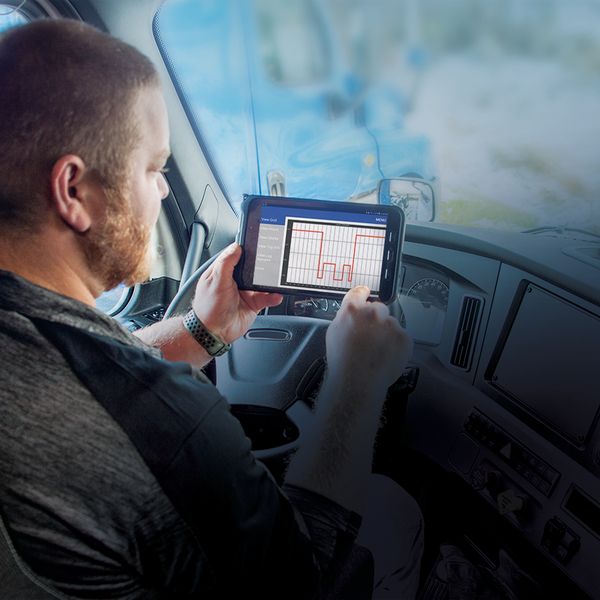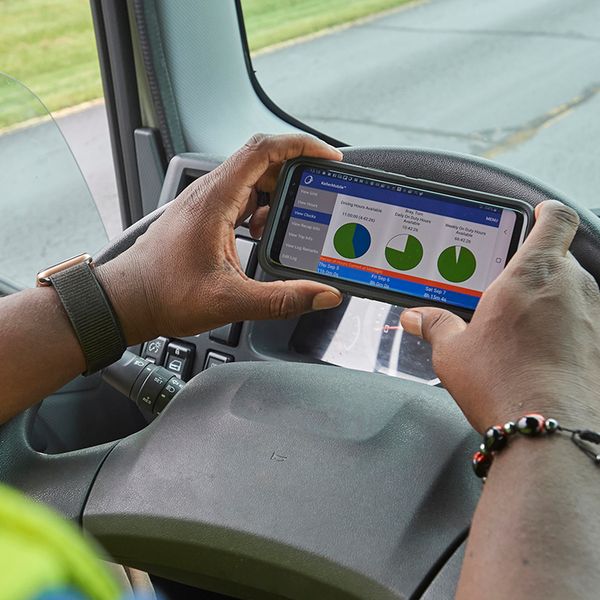What is “on-duty” time?
One of the primary hours-of-service details that throws off drivers and carriers is understanding when a driver is on duty. It’s important to understand the status. Historically, “form and manner” was the number one driver violation at roadside inspections. Form and manner are those ticky-tacky violations where the log is not necessarily inaccurate, the driver simply forgets to complete a necessary field. That all changed in 2020, when “log falsification” began trending as the number one violation. The primary reason for log falsification is because the driver chose the incorrect duty status.
Duty status definitions
The meanings of on duty and driving are found in 49 CFR 395.2.
Driving is defined as, “all time spent at the driving controls of a commercial motor vehicle in operation.”
“Off duty” isn’t included in the definition section, but there’s a good illustration found in the Federal Motor Carrier Safety Administration’s (FMCSA) interpretation of the section:
Drivers may record meal and other routine stops as off-duty time provided:
- The driver is relieved of all duty and responsibility for the care and custody of the vehicle, its accessories, and any cargo or passengers it may be carrying; and
- During the stop, and for the duration of the stop, the driver must be at liberty to pursue activities of his/her own choosing.
On duty receives the most complete definition. On-duty time means all time from the time a driver begins to work or is required to be in readiness to work until the time the driver is relieved from work and all responsibility for performing work. On-duty time includes all time:
- At a plant, terminal, facility, or other property of a motor carrier or shipper, or on any public property, waiting to be dispatched, unless the driver has been relieved from duty by the motor carrier;
- Inspecting, servicing, or conditioning any commercial motor vehicle at any time;
- Spent at the driving controls of a commercial motor vehicle in operation;
- Loading or unloading a commercial motor vehicle, supervising, or assisting in the loading or unloading, attending a commercial motor vehicle being loaded or unloaded, remaining in readiness to operate the commercial motor vehicle, or in giving or receiving receipts for shipments loaded or unloaded;
- Repairing, obtaining assistance, or remaining in attendance upon a disabled commercial motor vehicle;
- Spent providing a breath sample or urine specimen, including travel time to and from the collection site, to comply with the random, reasonable suspicion, post-crash, or follow-up testing required by part 382 when directed by a motor carrier;
- Performing any other work in the capacity, employ, or service of, a motor carrier;
- Performing any compensated work for a person who is not a motor carrier; and
- All time in or on a commercial motor vehicle, other than:
- Time spent resting in or on a parked vehicle (unless “in attendance” of hazardous materials),
- Time spent resting in a sleeper berth, or
- For team drivers: Up to 3 hours riding in the passenger seat of a property-carrying vehicle moving on the highway immediately before or after at least seven consecutive hours in the sleeper berth.
Roadside inspectors watch closely for logs that do not make sense:
- The distance traveled would normally take longer than indicated on the record;
- There is no on-duty not driving time for fueling, pre- and post-trip inspections, time at a working location, etc.; or
- Driver logs out of an ELD or goes into a special driving category when nearing an hours-of-service limit.
Incorrect use of yard moves and personal use
The primary reason for log falsification violations is the incorrect use of the special driving categories of “personal use” (personal conveyance) and “yard move.” ELDs may be configured to allow drivers to be “off duty” when driving the vehicle for personal use, or “on duty/not driving” when driving the vehicle in an area that is not open to public travel (yard moves).
Key to remember
A key for drivers has always been “log it as you do it.” Following this simple rule eliminates many errors in logging because no recall is necessary.



















































